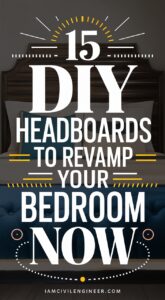 |
| Environmental Engineering |
Author of the Book
Ruth F. Weiner and Robin Matthews
Assessing Environmental Impact
Environmental engineering requires that the impact and interaction of engineered structures on and with the natural environment be considered in any project. In 1970 this principle was enacted into federal law in the United States. The National Environmental Policy Act (NEPA) requires that environmental impact be assessed whenever a federal action will have an environmental impact, as well as requiring that alternatives be considered. Many states have enacted similar legislation to apply to state or state-licensed actions. Since 1990, a number of “programmatic” environmental impact statements have been drafted.
Risk Analysis
One of the tasks of the environmental engineer is to understand and reduce the risks from hazards from environmental pollution to the environment and to public health in both long and short term. In particular the environmental engineer frequently is asked to estimate or project future risks, then to use science, engineering, and technology to design facilities andor processes to prevent or mitigate those risks. To accomplish this objective the risks associated with various hazards must initially be evaluated and Risk analysis is introduced here as a tool of the environmental engineer that crosses the boundaries of science, engineering, and risk analysis. This chapter is not a comprehensive treatise on risk analysis; rather, it includes those elements of risk analysis that an environmental engineer most importantly must understand and use.
Water Pollution
Although people intuitively relate filth to disease, the transmission of disease by pathogenic organisms in polluted water was not recognized until the middle of the nineteenth century. The Broad Street pump handle incident demonstrated dramatically that water could carry diseases.
Measurement of Water Quality
Quantitative measurements of pollutants are obviously necessary before water pollution can be controlled. Measurement of these pollutants is, however, fraught with difficulties. Sometimes specific materials responsible for the pollution are not known. Moreover, these pollutants are generally present at low concentrations, and very accurate methods of detection are required.
Water Supply
A supply of water is critical to the survival of life as we know it. People need water to drink, animals need water to drink, and plants need water to drink. The basic functions of society require water: cleaning for public health, consumption for industrial processes, and cooling for electrical generation. In this chapter, we discuss water supply in terms of:
• the hydrologic cycle and water availability,
• groundwater supplies,
• surface water supplies, and
• water transmission.
Download the Book
Like Us on Facebook!
The Content is for Members Only !!!
This Book is available to download only for our Bronze, Silver & Gold Level Members, you can simply click the button below to signup / login for your membership & Download.
Download this Book
Water Treatment
Many aquifers and isolated surface waters are high in water quality and may be pumped from the supply and transmission network directly to any number of end uses, including human consumption, irrigation, industrial processes, or fire control. However, clean water sources are the exception in may parts of the world, particularly regions where the population is dense or where there is heavy agricultural use. In these places, the water supply must receive varying degrees of treatment before distribution.
Subscribe Us on YouTube!
Contents of the Book
Environmental Engineering
Assessing Environmental Impact
Risk Analysis
Water Pollution
Measurement of Water Quality
Water Supply
Water Treatment
Collection of Wastewater
Wastewater Treatment
Sludge Treatment and Disposal
Nonpoint Source Water Pollution
Solid Waste
Solid Waste Disposal
Reuse, Recycling, and Resource Recovery
Radioactive Waste
Solid and Hazardous Waste Law
Meterorology and Air Pollution
Measurement of Air Quality
Air pollution Control
Air Pollution Law
Noise Pollution
















